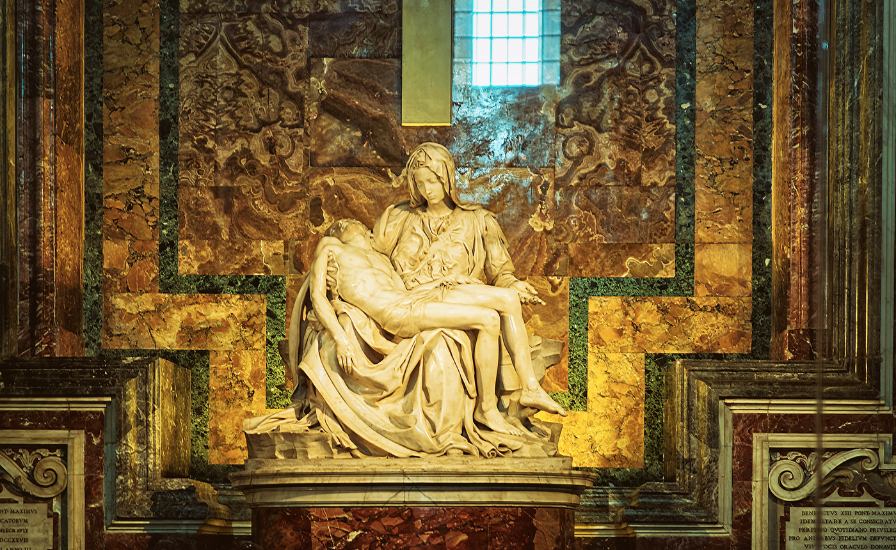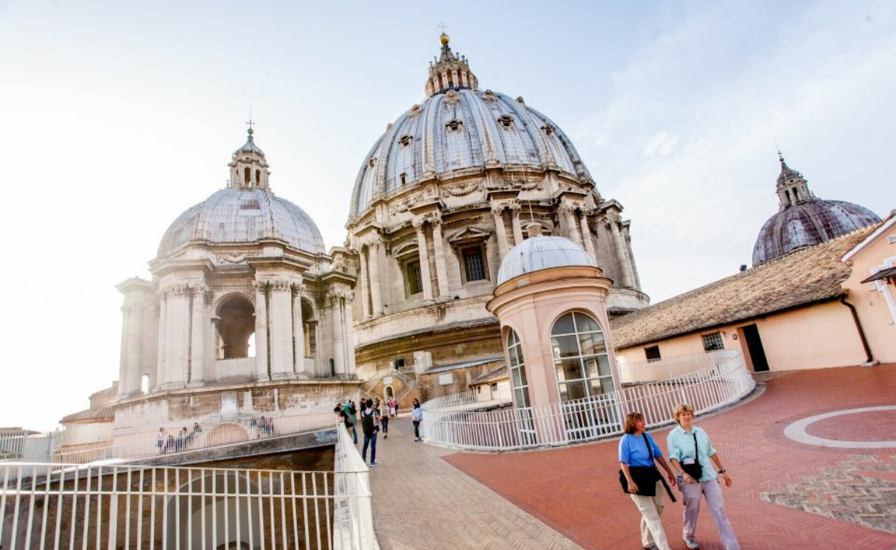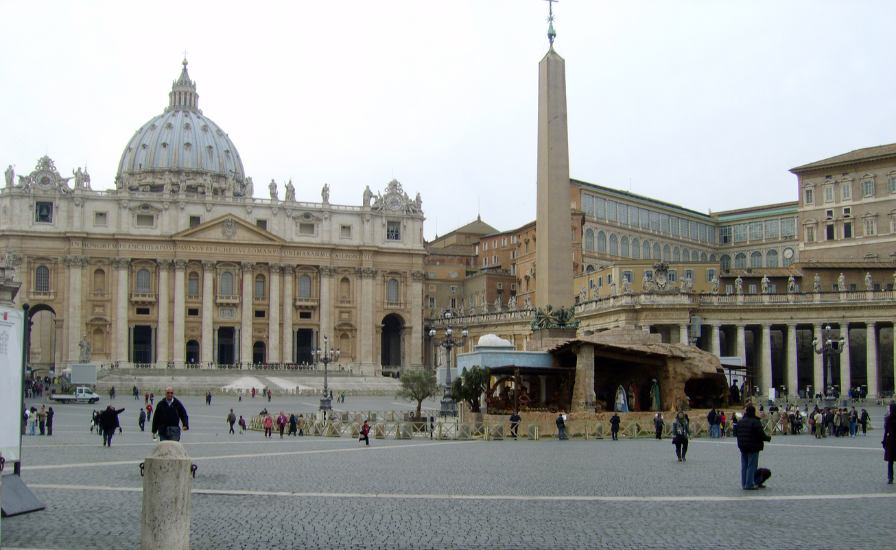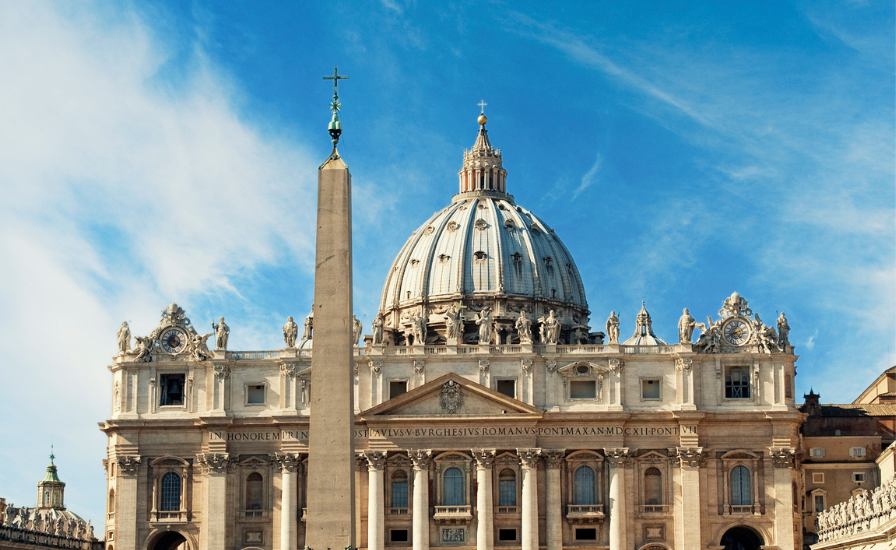Discover the Secrets Behind St. Peter’s Basilica’s Iconic Dome
Introduction
Discover the secrets behind St. Peter’s Basilica’s iconic dome. Learn about its history, architecture, and how to visit. Tips on tours, tickets, and breathtaking views.
Tools
Supplies
Secrets Behind St. Peter’s Basilica’s Iconic Dome
St. Peter’s Basilica, an architectural marvel in the heart of Vatican City, stands as a testament to Renaissance artistry and religious devotion. One of its most awe-inspiring features is its iconic dome, a masterpiece of engineering and design. This article will uncover the secrets behind St. Peter’s Basilica’s dome, exploring its history, construction, and the breathtaking views it offers. Whether you’re planning a visit or simply intrigued by its grandeur, this guide will provide valuable insights into this monumental structure.
The Visionaries Behind the Dome

Michelangelo’s Masterpiece
The story behind the secret of St. Peter Basilica’s dome begins with Michelangelo Buonarroti, the genius artist and architect. Although the initial design was proposed by Donato Bramante, Michelangelo took over the project in 1547, bringing his unique vision to the structure. His design was inspired by the Pantheon in Rome, aiming to create a dome that would surpass all others in beauty and engineering.
The Challenge of Completion
After Michelangelo died in 1564, the construction of the dome was left incomplete. The project was then taken over by Giacomo della Porta and Domenico Fontana, who followed Michelangelo’s designs closely. In 1590, the dome was finally completed, standing at an impressive height of 136.57 meters (448.1 feet) and becoming the tallest dome in the world at that time.
Architectural Marvels
Double-Shell Structure
One of the most fascinating aspects behind the secret of St. Peter Basilica’s dome is its double-shell structure. The dome consists of two layers: an inner shell and an outer shell. This innovative design not only provides structural stability but also allows for maintenance and repairs without compromising the integrity of the dome.
Ingenious Engineering
Michelangelo’s dome was a pioneering achievement in engineering. The use of a ribbed structure allowed for the distribution of weight evenly, preventing the dome from collapsing under its own weight. This method was later emulated in other famous domes, including those of St. Paul’s Cathedral in London and the U.S. Capitol in Washington, D.C.
The Climb to the Top

St. Peter’s Basilica Cupola Guided Tour
For those looking to explore the dome up close, the St. Peter’s Basilica cupola guided tour is an experience not to be missed. This tour takes you up to the base of the dome, where you can marvel at the intricate mosaics and the breathtaking views of the Vatican City and Rome.
The Ascent
The climb to the top of the dome involves a combination of elevators and stairs. The first part of the journey can be completed via elevator, which takes you to the roof level of the Basilica. From there, a narrow, winding staircase with over 300 steps leads to the top of the dome. While the climb can be physically demanding, the panoramic views from the top make it well worth the effort.
Breathtaking Views
Once at the top, visitors are rewarded with a stunning 360-degree view of Rome. From this vantage point, you can see the Vatican Gardens, the Tiber River, and the sprawling cityscape of Rome. It’s a perfect spot for photography and offers a unique perspective on the architectural marvels of Vatican City.
Historical Significance
A Symbol of Papal Authority
The dome of St. Peter’s Basilica is not only an architectural wonder but also a symbol of papal authority and the Catholic Church’s influence. It stands as a testament to the vision and ambition of the popes who commissioned its construction and the artists who brought it to life.
Artistic Masterpieces
The interior of the dome is adorned with magnificent mosaics that depict various religious scenes and figures. These mosaics are a marvel in themselves, showcasing the incredible artistry and craftsmanship of the Renaissance period. A self-guided tour of St. Peter’s Basilica with an audio guide can provide in-depth information about these artworks, enhancing your understanding and appreciation of their significance.
Exploring the Basilica

St. Peter’s Basilica Audio Guide
To fully appreciate the beauty and history of St. Peter’s Basilica, consider using a St. Peter’s Basilica audio guide. This guide provides detailed information about the various artworks, sculptures, and architectural elements within the Basilica. It allows visitors to explore at their own pace, ensuring that they don’t miss any of the important details.
Notable Features
The Pietà: Michelangelo’s famous sculpture, the Pietà, is located in the first chapel on the right as you enter the Basilica. This masterpiece depicts the Virgin Mary holding the body of Jesus Christ after his crucifixion.
The Baldachin: Bernini’s bronze canopy, known as the Baldachin, stands over the high altar of the Basilica. It’s an exquisite example of Baroque art and serves as a focal point within the vast interior.
The Tomb of St. Peter: Beneath the Basilica lies the Vatican Grottoes, where many popes are buried, including St. Peter himself. A visit to this sacred site provides a deeper connection to the history and spirituality of the Basilica.
Practical Tips for Visiting
Best Time to Visit
To avoid the crowds and make the most of your visit, plan to arrive early in the morning or late in the afternoon. The Basilica opens at 7:00 AM, and the first hour is typically less crowded. Alternatively, visiting after 4:00 PM can also result in shorter lines and a more peaceful experience. The best time to visit St. Peter Basilica is either during these early hours or later in the afternoon to enjoy a more serene atmosphere.
Dress Code
As a place of worship, St. Peter’s Basilica has a strict dress code. Ensure that your shoulders and knees are covered, and avoid wearing hats inside the Basilica. Lightweight scarves or shawls can be handy for covering up if needed.
Tickets and Tours
Booking tickets in advance is highly recommended, especially for the St. Peter’s Basilica cupola guided tour and the Vatican Museums. Combination tickets that include multiple Vatican attractions can save you time and money, and many of these tickets offer skip-the-line access.
The Legacy of the Dome

Inspiring Future Generations
The secrets behind St. Peter Basilica’s dome have inspired countless architects and artists throughout the centuries. Its innovative design and engineering techniques have set a benchmark for dome construction and have influenced numerous iconic structures around the world.
A Testament to Human Ingenuity
The construction of the dome is a testament to the ingenuity and perseverance of the Renaissance architects and builders. Despite the challenges and setbacks, they created a structure that continues to awe and inspire visitors to this day.
Frequently Asked Questions about St. Peter’s Basilica’s Dome
1. What is the history behind St. Peter’s Basilica’s dome?
St. Peter’s Basilica’s dome was designed by Michelangelo, inspired by the Pantheon in Rome. The construction started under his direction in 1547 and was completed by Giacomo della Porta and Domenico Fontana in 1590. The dome stands as a testament to Renaissance engineering and artistic vision.
2. How tall is St. Peter’s Basilica’s dome?
The dome of St. Peter’s Basilica reaches a height of 136.57 meters (448.1 feet), making it one of the tallest domes in the world.
3. Can I visit the top of St. Peter’s Basilica’s dome?
Yes, visitors can climb to the top of the dome. The ascent involves an elevator ride followed by a climb of over 300 steps. The effort is rewarded with a stunning 360-degree view of Rome.
4. What are the benefits of a St. Peter’s Basilica cupola guided tour?
A guided tour of the cupola provides insightful information about the history, architecture, and significance of the dome. It also includes fast-track entry, allowing visitors to bypass the long queues.
5. How can I book St. Peter’s Basilica dome tickets?
Dome tickets can be booked online through the Vatican’s official website or through various authorized tour operators. Booking in advance is recommended to secure your spot and avoid long lines.
Conclusion
Discovering the secrets behind St. Peter Basilica’s dome is a journey into the heart of Renaissance art and engineering. From the visionary designs of Michelangelo to the breathtaking views from the top, every aspect of the dome is a testament to human creativity and determination. Whether you’re taking a St. Peter’s Basilica cupola guided tour, using a St. Peter’s Basilica audio guide, or simply marveling at its grandeur from below, the dome offers a unique and enriching experience.Plan your visit carefully, respect the sacred space, and immerse yourself in the history and beauty of St. Peter’s Basilica. With its rich history, stunning architecture, and spiritual significance, the dome of St. Peter’s Basilica is a highlight of any trip to Rome and a symbol of the enduring legacy of the Renaissance. Whether you’re an art lover, history enthusiast, or spiritual seeker, the secrets behind St. Peter Basilica’s dome will leave you inspired and awe-struck.